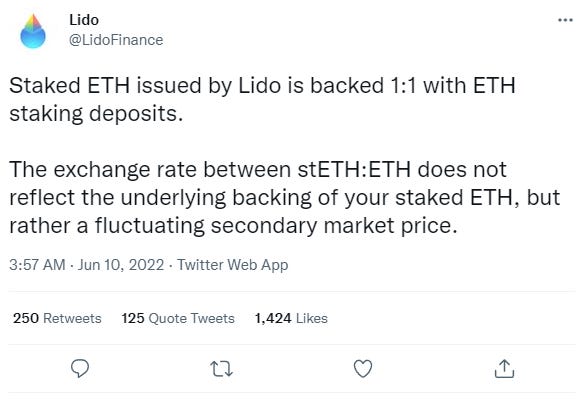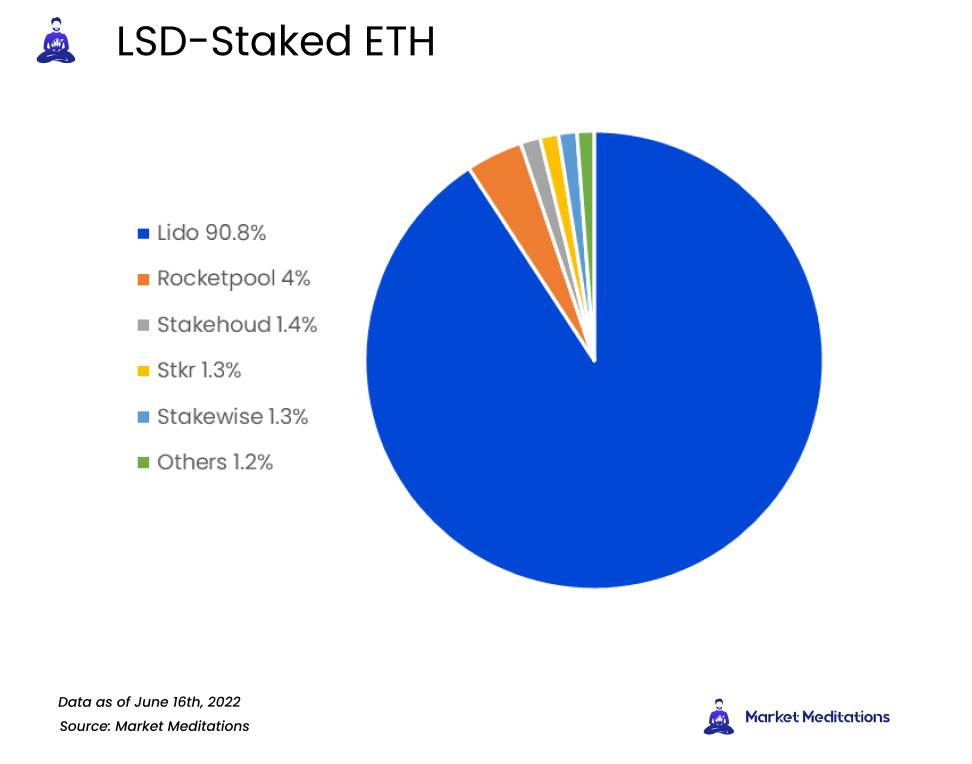Ethereum 2.0 Guide
Market Meditations | June 16, 2022

? Ethereum 2: The Mergening
1️⃣ Proof of How Ethereum Works.
KyleMcDonald.github: Ethereum Emissions: A Bottom-Up Estimate
As represented above the impact of Ethereum’s energy consumption has been consistently growing as the network sees wider adoption.
To know where we’re going, we have to examine where we’ve been.
- Powering down. At the current rate, Ethereum consumes about as much energy as The Netherlands. The merge is estimated to reduce the network’s energy consumption by 99%.
- Sales pressure. The merge eliminates the need for miners. Without parties who need to constantly sell ETH to pay for operational costs, this steady flow of market supply will no longer exist.
- It’s easy being green. Previously hesitant Environmental, Social and Governance (ESG) conscious investors will be more eager to engage a far more energy efficient network.
- Cutting emissions. Post-merge, ETH’s token emission rate will drop from about 4% to under 0.5%. That makes EIP-1559’s burning mechanism much more effective, transforming Ethereum’s inflation rate (~3.7%) to a deflation rate of up to 2%.
2️⃣ Opportunities Knocking?
An event this big carries with it great opportunity.
- Lido’s stETH is currently trading at ~6% discount against ETH via 1inch. According to Lido, stETH will be redeemable for ETH at a 1:1 ratio approximately 6 months after the completion of the merge.
- Rocketpool, another liquid staking solution, is also offering rETH at a smaller discount (~3%), but can be a valid option for those looking to diversify.
- Holding ETH itself could prove lucrative if things go off without a hitch. In a best-case scenario, the price of Ether is poised to increase following the upgrade.
3️⃣ The Risk of Reward.
Many things have to fire correctly to achieve success. In a crypto bear market, there is no room for error. Be sure to consider each of the following:
- Not a sure thing. Fundamentally changing the way Ethereum runs comes with risks. Yes, the code has been audited, testnets have been stood up and stress-tested, merges will be completed in test environments, but if the merge fails, so will ETH’s price.
- Not so fast. The merge has been delayed before, and it definitely could be delayed again. News of another delay could send prices into a downward spiral.
- The price is right. The merge is big news, and markets could have already priced in a successful upgrade. This might result in underwhelming upside upon publication of news.
- Dumped on. When the merge completes, staked ETH will unlock soon after. Lido alone currently has over $5 billion worth of ETH staked. An unlocking supply of that size has the power to flood the market and drop the price.
- Market conditions. It’s still brutal out there. The merge is a wonderful narrative, but we could see bullish fundamentals overshadowed by bearish presence resulting in investors’ disappointment.
Liquid Staking Derivatives (LSDs) make up the ETH2 liquid staking balance. Of all platforms offering these services, Lido currently has over 90% of the market.
⁉A word on Lido: There are currently over 4.2 million ETH staked by Lido Finance, making it the largest provider of staking services on the network. Unfortunately, it also poses a debatable risk to the centralization of Ethereum 2.0. Any one entity controlling more than ⅓ possession of all staked Ethereum would present a risk of a centralisation attack.
If properly researched and managed, ETH 2.0 presents some undeniable investment opportunities, but going all-in on an unknown shouldn’t be anywhere on a responsible investor’s radar.




